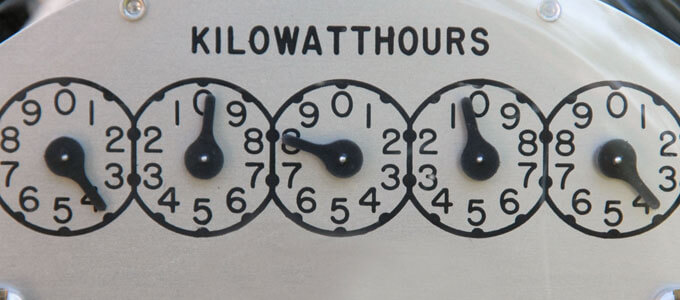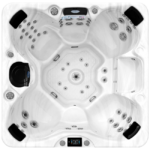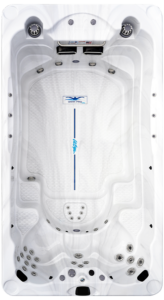Spa Ownership Energy Tips – Run Your Spa on Pennies per Day

A relaxing evening in the spa can be the best part of any day. It offers its user a sanctuary from the trials and worries of the office or a hard day’s work. The worst aspect of that relaxing period could be that you may be paying more than you should for those precious, peaceful moments. Heat loss and inefficiency in spas can be a drain on your electricity. On average, a spa costs over $360.00 annually to heat. Reducing heat loss is one way to lower energy usage and ultimately the costs of owning a spa.
If you’re in the market for a new spa, read on as we will discuss some of the features to look for. If you already have an energy hoarding unit that you’re not ready to part with, there’s a few tips we’ve addressed here for you as well.
New Features on Spas
To make owning a spa more affordable, manufacturers have come up with innovative ways to upgrade equipment and improve features on their tubs without aggressively affecting your pocket book. When shopping for a spa, ask your dealer about the energy efficiency of the unit. Here’s what to look for:
- Spa Covers — Insulated spa covers keep most of the heat inside the spa. Make sure your cover is equipped with straps that lock the cover down to the unit. Not only will you improve the safety aspect of your spa, but a tightly sealed cover greatly reduces heat loss from around the edges. Check to make sure your spa’s cover will be tapered or sloped; creating a run off for any excess rain water that may build up on the cover. As spa covers age, you may notice the weight of the cover increasing as the foam inside becomes saturated with moisture. Once this happens, replace the cover immediately as a water logged cover will have lost most of it’s insulating qualities.
- Insulation — At minimum, the shell and plumbing of the spa should have a generous amount of insulation. Even though most heat is lost from the top, well-insulated interiors reduce heat loss from below. If you live in an area that experiences extremely low temperatures or snow conditions, ask about a “full foam” option. This encapsulates the entire underbelly of the spa with solid foam for optimum insulation.
- Pumps — Energy-efficient pumps are becoming more common in spas. Make sure that your spa has at least one 2 speed pump for filtration. Most spas are pre-programmed to filter twice a day for two hours a day. Rather than going full bore for those 4 hours, running the filtration pump on low speed will greatly reduce the amount of electricity used.
- Heaters — Modern heaters utilize improved heat transfer with less waste. An undersized heater will require your spa to run longer and draw more energy. If you are into the technical jargon, as a good rule of thumb you should have a 1.5 kilowatt heater in a 110 volt unit and a 5.5 kilowatt heater in a 220 volt unit.
- Go Green – Not literally! “Going green” is not the fondest term in the pool and spa industry as it is sometimes associated with poor water chemistry. When discussing energy usage, “going green” means decreasing consumption of electricity and ultimately lowering your carbon footprint. Some spa manufactures specialize in just this. Ask your dealer to see their most energy efficient models. These units most often do not feature large jet quantities or the latest iPod stereo, but they certainly create a relaxing oasis on low energy usage.
Making an Existing Spa More Efficient
There are a few things you can do to improve your current spa. Some are common sense, others may not have occurred to you. Just a few steps can help you reduce the cost of operating your current spa:
- You should never locate a spa on an open deck. If you have one on a deck, the open air beneath robs the heat from your spa. Underpin the deck with insulation board and siding if possible. This will help keep the temperature beneath the deck much warmer and prevent breezes from chilling your spa from below.
- Lower the temperature of your thermostat when not in use. Keep your spa at 80 – 90 degrees and turn it up an hour or so before using. This will save energy over keeping it at a higher temperature all the time.
- Use shrubs, privacy panels or fencing around the spa area as windbreaks to retain the spa heat better.
- If your spa is equipped with them, make sure your air venturi valves are closed when the spa is not in use. An air venturi valve blends air from outside your spa with the water in the jets. Pumping cold ambient air inside the spa will drastically lower the temperature and cause it to constantly run trying to maintain its heat.
- Turn the thermostat very low or off when on vacation.
You’ll get more spa for the money by following these few tips. Keeping operating costs down will increase your enjoyment, knowing your spa is costing you pennies per day instead of dollars.





Its good to see that new features are there on spa filters. And making existing spa more efficient is a new way and clarifies more ideas for maintaining filters. Thanks for posting such a nice blog.
my circuit breaker tripped today, can’t reset, need help?